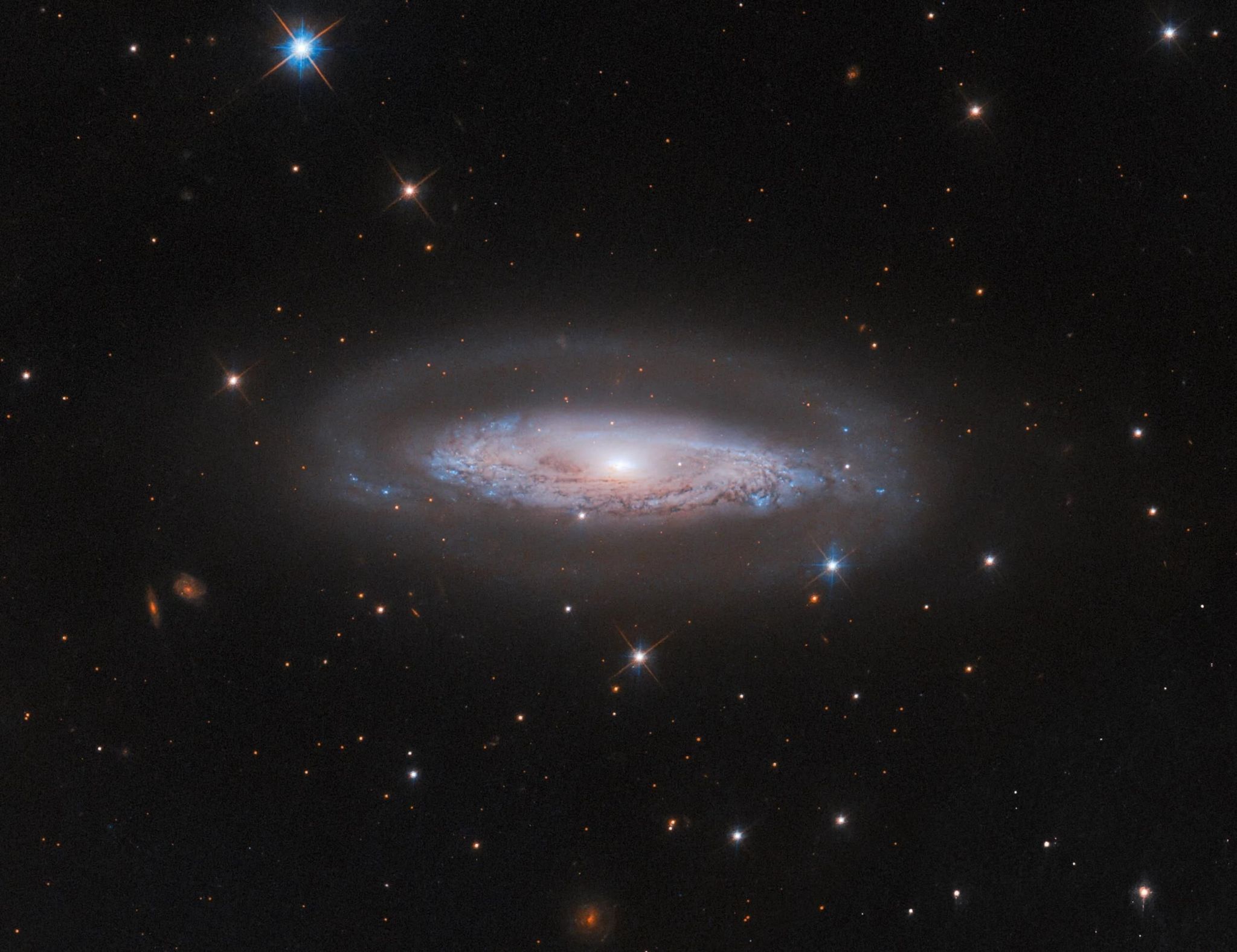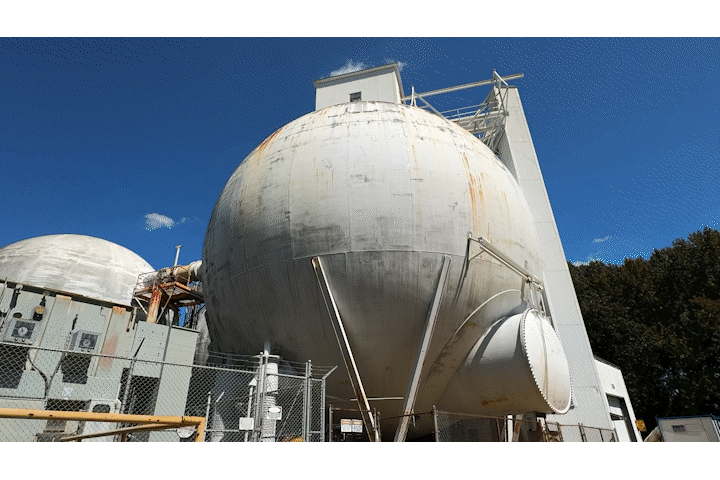This NASA/ESA Hubble Space Telescope image features the spiral galaxy IC 4709 located around 240 million light-years away in the southern constellation Telescopium. Hubble beautifully captures its faint halo and swirling disk filled with stars and dust bands. The compact region at its core might be the most remarkable sight. It holds an active galactic nucleus (AGN).
If IC 4709’s core just held stars, it wouldn’t be nearly as bright. Instead, it hosts a gargantuan black hole, 65 million times more massive than our Sun. A disk of gas spirals around and eventually into this black hole, crashing together and heating up as it spins. It reaches such high temperatures that it emits vast quantities of electromagnetic radiation, from infrared to visible to ultraviolet light and X-rays. A lane of dark dust, just visible at the center of the galaxy in the image above, obscures the AGN in IC 4709. The dust lane blocks any visible light emission from the nucleus itself. Hubble’s spectacular resolution, however, gives astronomers a detailed view of the interaction between the quite small AGN and its host galaxy. This is essential to understanding supermassive black holes in galaxies much more distant than IC 4709, where resolving such fine details is not possible.
This image incorporates data from two Hubble surveys of nearby AGNs originally identified by NASA’s Swift telescope. There are plans for Swift to collect new data on these galaxies. Swift houses three multiwavelength telescopes, collecting data in visible, ultraviolet, X-ray, and gamma-ray light. Its X-ray component will allow SWIFT to directly see the X-rays from IC 4709’s AGN breaking through the obscuring dust. ESA’s Euclid telescope — currently surveying the dark universe in optical and infrared light — will also image IC 4709 and other local AGNs. Their data, along with Hubble’s, provides astronomers with complementary views across the electromagnetic spectrum. Such views are key to fully research and better understand black holes and their influence on their host galaxies.
from NASA https://ift.tt/8FbktQf



No comments:
Post a Comment